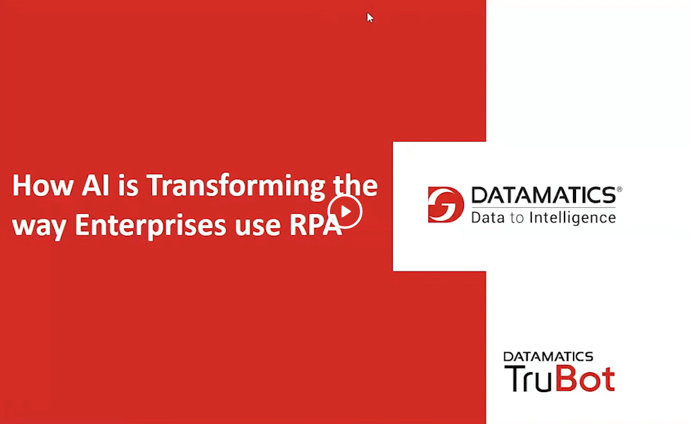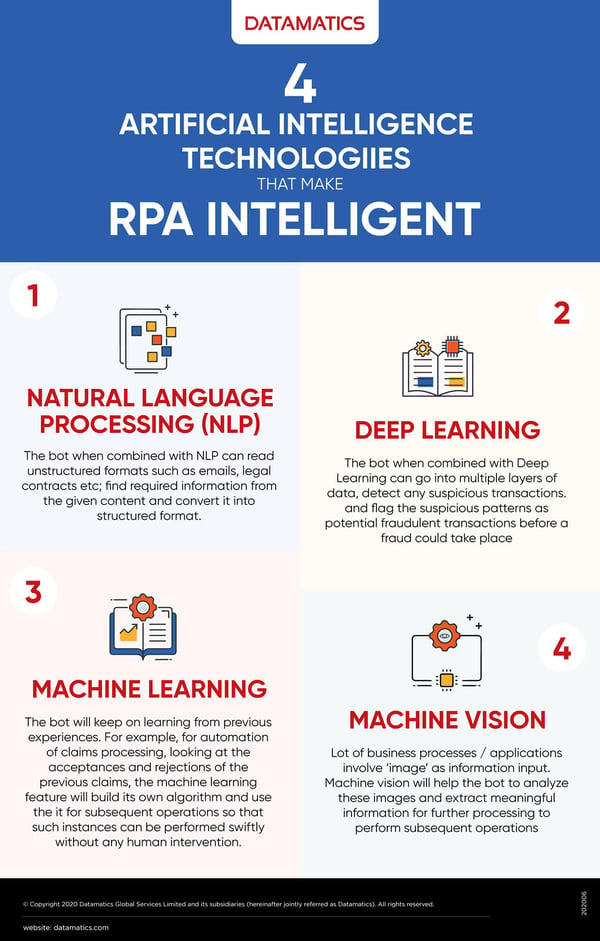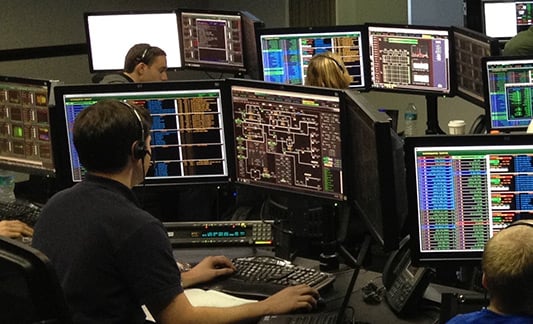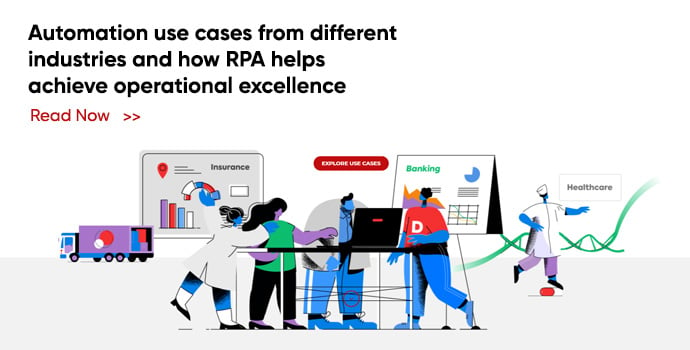How Artificial Intelligence transforms the Robotic Process Automation landscape to make it more productive
by Ulhas Kulkarni, on Dec 16, 2019 11:00:00 AM
Estimated reading time: 5 mins
Necessity is the mother of invention. It is the real driver of innovation. Seldom is it disruption as it is popularly perceived.

Robotic Process Automation - RPA was invented to automate tedious and mundane tasks. It mimics human actions and automates a sequence of steps which are 1. manual, 2. repetitive, 3. high volume, 4. rule-based, and 5. standard. It delivers accuracy, speed, and cost savings. It is a non-intrusive technology and offers a clear road map. It is easily implemented and reaps fast RoI within a few months.
It offers close to 100% accuracy. It does exactly what it is asked to do with 4 to 5 times more speed than manual operators. It scales-up to handle vast volumes with minuscule implementation costs and significantly improves turnaround time (TAT).
It makes customers happy due to fast TAT and the internal customer happier as it does more with less while enabling you to improve the way you do business. The icing on the cake is – RPA is estimated to capture a market of $4.3bn by 2022, according to Horses for Sources.
So far so good? Then what do you think is the problem?
It is just this ...
"On encountering unstructured data, the RPA investment fails."
That is, RPA in its vanilla form cannot handle unstructured text. A small problem, but yes big enough to let you go off billion dollar opportunities.
So what is the solution?
It is here that Artificial Intelligence (AI) / Machine Learning (ML) steps in to convert the unstructured data format to structured.
AI not only helps automate vast swathes of processes but also enables you to streamline and create new ways about old problems, which were simply thought insurmountable and were lived with.
Watch now >>
RPA examples
Here are some RPA use cases, which fulfill the criteria stated above for RPA automation. However, they fail when they encounter unstructured documents:
- Example 1: Invoice processing:
Businesses usually receive invoices from a large number of vendors. They are received in different shapes and formats with 80% or more being in paper format. OCR can handle the issue to a certain extent but requires manual setting of templates, which takes time and reduces the impact of automation. If the invoices come in huge numbers and also in unstructured format, then RPA fails and thereby the investment. It cannot make invoice entry from the document to ERP. This use case finds less adoption due to practical difficulties and usually has less takers. - Example 2: Claims processing:
Claims are usually received in different formats along with supporting documents. RPA enablement requires frequent changing of templates. It cannot segregate documents or extract data to upload to claims system. This use case requires profuse human intervention. - Example 3: Customer on-boarding:
The process is usually facilitated with structured forms. However, when encountered with supporting documents with unstructured text, the automation effort fails, and manual intervention is required.
RPA undoubtedly delivers benefits in all the three use cases. However, they fail when they encounter unstructured data, requiring human participation. Here, AI not only helps bridge the gap but also transforms the RPA landscape.
How does AI transform the RPA landscape?
RPA augments AI technologies such as Natural Language Processing (NLP) and Voice Recognition to produce a permutation and combination of use cases.
Chatbots based on the same premise help to deliver basic advice to customers – as diverse as legal to concierge services.
The more the tool learns, from the right use cases, the more and better it is able to perform.
AI/ML is the only recourse at the existing stage of technology evolution to handle big and fast moving data sources. It handles complex data through incremental learning and assists actions where decision making was involved earlier.
Having said this, I wish to state that AI is not positioned to take over tasks but to just assist operations.
AI has the widest possible catchment area. From the context of RPA, in this case, AI augments RPA functionality by enabling it to handle unstructured data and expands its purview through AI-enabled Voice Recognition.
It makes RPA more productive. AI takes over where RPA stops and helps achieve a sustainable growth.
We have a slew of AI technologies in the market that make RPA extraordinarily intelligent |
Download Infographic >>
How does AI add value?
In a heavy paper-based process environment or simply an unstructured data scenario, AI facilitates the extraction of data from the unstructured sources such as emails, social media feeds, chat logs, free text word documents, pdfs, images, etc. In the process, it converts unstructured data to structured and takes RPA to a completely new level.
AI also helps decipher human voice and perform actions based on voice requests. In this endeavor, it makes use of NLP to understand the language in the manner that we speak. ML takes the automation effort further and enables the algorithms to learn on a day-to-day basis. It makes tomorrow’s output or in technical parlance the t+1 output far more superior as compared to yesterday’s or t-1 output. With each passing day, “the solution becomes smarter and performs better”.
AI-enabled RPA takes over the human intervention required for judgment based actions of choosing between multiple options to take the smarter route.
Now with AI augmentation, RPA is able to identify free text documents, classify them, extract unstructured data, make it structured, and index it to make it searchable. AI-powered algorithms make this information “searchable” or more specifically “callable” based on voice commands. Pure-play RPA further transfers the searched information between systems and AI then decodes it into voice and text.
So now where RPA faced a stumbling block in face of varying templates, different documents, unstructured text, it can take the processing to the next level with AI. All processes related to invoice, claims processing, on-boarding, etc., are now seamlessly handled with miniscule human intervention. I reiterate “AI is not positioned to take over tasks but to assist in operations and do more with less and enhance productivity”.
Use cases where AI can augment RPA
AI pushes pure-play RPA to gain higher mileage, which is not achievable in absence of AI. Here are some of the prominent use cases:
- Customer support: The bots identify the category of the email and push it to the relevant workflow. They are also able to identify the type of chat request and push the request to the right workflow and retrieve the information. All these activities are performed in real-time resulting in customer satisfaction due to higher accuracy and faster TAT. Read more >>
- Fraud detection & prevention: The RPA and AI technology combo sitting atop Big Data generated during various transactions is able to identify different patterns, some of which could be fraudulent in nature. RPA analyzes these said transactions under scrutiny by comparing them against the identified patterns and thus avert frauds and other malpractices. Read more >>
- Smart city projects: RPA collates data collected from sensors and connected devices. AI takes over and detects patterns and throws up discrepancies vis-à-vis the desired values. This happens in real-time while monitoring the different aspects of a smart city. RPA then routes the red flags to an announcement system.
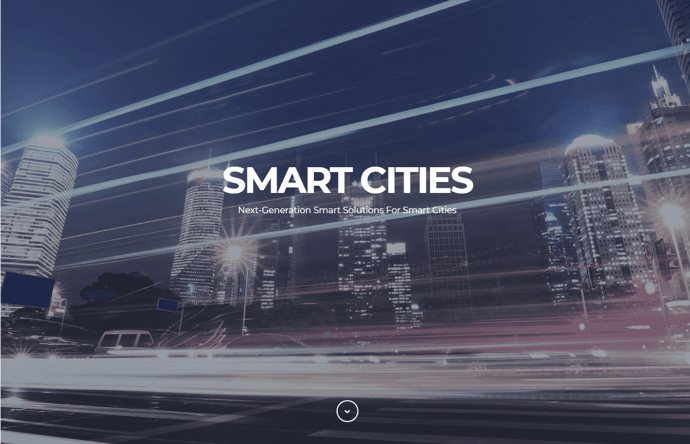
More RPA use cases from different industries
In summary
RPA by itself is a game changer. Still it encounters certain pitfalls in face of unstructured data. AI augments RPA to not only take the technology landscape to a new high but also enables the facilitation of new business use cases, which were quite unimaginable in the past.


















